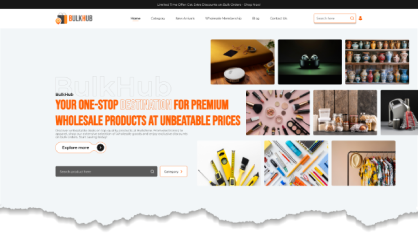
Introduction
Do you keep track of the visitors or the customers coming to your site? Google Analytics does. Yes, this is the only way to keep an eye on the visitor's purchase. Sneak into it. What all this means is you can understand your customers better about their needs from your site.
Opting for integrating Google Analytics is the smartest way not only to keep track of users, but it boost overall credibility too. When you know what your customers like and search on your site, you try to show them relevant results on your site. Eventually, this raises the interest in users to stay more and interact more with your site. And finally, this gives a better user experience on your Woocommerce site.
Now for Woocommerce Google Analytics integration, you need perfect assistance to look at. And let me tell you, this blog is made for you. Let’s start discussing it.
What is Woocommerce?

Many of you have heard about Woocommerce and its biggest widespread in the e-commerce world. This is the tool, or, as it can be said, a plugin powered by Automattic giving phenomenal features for an online store building.
What is Google Analytics?

As the name indicates, it was launched by Google especially for online store owners to keep track of their customers on their websites. This feature by Google gives a tracking report about visitors, page views, and links on your website. If you're unsure whether Google Analytics is the right tool for your needs, and are considering Microsoft Clarity, be sure to check out our previous blog post that dives deep into the differences between Microsoft Clarity vs Google Analytics. There, we break down the functionalities of each platform to help you choose the one that best suits your online store's goals.
What is the Need for Woocommerce Google Analytics Integration?
Well, there are so many reasons to count when talking about why to connect your woocommerce store with Google Analytics. Here are some of them:
- Google Analytics is highly required to know about your visitors and customers' behaviour on your site. This is the prime reason why there is a need to use Google Analytics. As it gives a complete report on how the visitors are seeing your site.
- E-commerce stores are highly benefited by Google Analytics, as it lets you know about the products generating more revenue. It even tells the specific product generating more revenue and its insights too.
- As a website owner, you get to know about your site’s weaknesses and strengths easily. Which pages are getting more visits, which links, and which products are more loved by the visitors?
- Also, those already using analytics can get Google Analytics to refine the audience data better.
Installing and Setting up WooCommerce
This is the very initial step for Woocommerce Google Analytics integration. But first, you need to get the Woocommerce plugin on your site.
For this, visit the dashboard area of your website, hit the Plugins tab, and then the Add New. On the next page, search Woocommerce and tap the Install button once found.

After the installation, hit the Activate button, and it will be present on your site.
After you have activated the plugin, it's time to go through the setup wizard. The initial stage of the setup wizard tells you to put in the address and the zip code.
The next step is to choose the industry type, which can be chosen as multiple entries.

The next page directs you to choose from the products to sell online. Even this entry can be selected as multiple ones.
The next page will ask you for more details about your store and choose a suitable theme for it.
Finally, the last step asks you to provide details like payment methods, shipment, etc.
Create a Google Analytics Account
To have a Google Analytics account, you need to first own a Google Account. You must have a Google account for easy signup.
After this, reach the Google Analytics website and tap the “Get Started Today” button. You will be asked to continue with your existing Google account. Those with no Google account will have to create a new one.
A new screen will appear with “Welcome to Google Analytics." Under this, you need to tap the “Start Measuring” button to begin the process.
You are now in the first phase of the Google Analytics account creation, where you need to provide an account name. It can be anything related to you or your business.
The next screen will appear as Account data sharing settings, where you will be informed about where you can share it. By default, there are some settings done, and you can keep them as they are.

The next phase will ask you to create the Google Analytics property for Woocommerce Google Analytics integration.
You need to then give a name to the property and then choose the reporting time, zone, and currency. Tap on the Next button, and you will reach the next phase. This phase is the business details, where you need to choose the “industry category” from the drop-down menu along with the ‘business size.”.
Once done, tap the Next button, and the next phase will ask you to choose the business objective. What this helps is you get personalized reports for your venture.
You can choose from generating leads, driving online sales, raising brand awareness, user behavior, and more. You can even choose multiple entries and finally tap the Create button. The next phase will be presented with the Google Web Stream options. Among three platforms, you need to choose "Web.”
The next step is to enter the website URL and the stream name. On the setup data stream page, Google has set a default option “Enhanced Measurement." This feature helps in tracking page views, scrolls, outbound links, and more stuff.
Next, tap the Create Stream button, and you have now created a stream. This will show the stream name, URL, ID, and the measurement ID. Also, you will see various recorded enhanced measurements.
On the top of the page, you will see an alert bar that will let you know how to add Google Analytics to your site. For further check, tap the “View Instructions” button, and it will let you know different ways to add Google Analytics tracking code to your site.
On this page, you need to switch to the “Install Manually” tab, and it will show the Google Analytics tracking code.
Keep this code copied with you, as you will need this code to track and analyze users' behaviour on your website.
Steps for Woocommerce Google Analytics Integration
When you finally have created an account on Google Analytics, it's now time to connect it with your WooCommerce website. Let me make it clear to you that linking your site with Google Analytics comes with two options. The Woocommerce Google Analytics plugin and the MonsterInsights plugin are the two options that can be used.
Method 1: Google Analytics using the Woocommerce Google Analytics Plugin
The first method to add Google Analytics is by using the Woocommerce Google Analytics plugin. This plugin comes in its free and paid versions.
Its free version comes with basic features like tracking user visits and events using Google’s analytics program. The free version even tells you about how the users interact with your store products along with cart placing options. It even supports displaying ads in between your store.
Then comes the premium version with additional features to add. Along with the free version features, you can analyze the checkout behaviour of the users on your site. There is an exact analysis of which buttons or links are getting more clicks. Also, as a website owner, you can exclude the number of shop managers away from the tracking meters.
The paid version even helps in performing A/B testing, multivariate testing, and redirection tests using Google Optimize.
Adding Woocommerce Google Analytics to your Website:
Firstly, you need to install and activate WooCommerce on your site. After this, you need to install any Woocommerce Google Analytics integration Plugin. For the paid version, you simply need to get the zip file of the plugin and then head to the Add New section of the Plugins tab.
- Upload the zip file and then tap the Install button. Once installed, hit the Activate button.
- To configure the plugin, head to the Settings option under the Woocommerce section and then hit the Integration button.
- Here, you will find various settings to configure:
- There is the Google Analytics tracking ID section through which you can link your analytics account to your site.
- Then you will find the “Use Global Site Tracking” option, letting you get the analytics data across various tracking IDs.
- Enabling features like Universal Analytics and standard tracking will help in refining the analytics report on your site.
- To display ads on your Woocommerce platform, tap on the Display Advertising support option. There is an error-tracking option too.
- To tighten the security of your Woocommerce store, there is the Anonymize IP address option.
- Purchase transactions and add-to-cart events help to smooth carting and purchasing options on your site.
When you have learned every setting feature on the integration part, it's now time to test the analytics report. Testing helps determine whether you have the plugin setup right and whether it's working well.
By testing the functioning, you can even figure out the errors and quickly solve them easily.
Method 2: Connect Woocommerce with Google Analytics using the MonsterInsights Plugin
This is the second type to connect your woocommerce site with Google Analytics using the MonsterInsights plugin.

But first, let me tell you that the MonsterInsights plugin is another well-qualified plugin when it comes to analyzing your online store. It features a separate analytics dashboard where users can view all the analytics data easily. Universal tracking on multiple devices, link attribution, insights on specific pages, and more features are added.
Well, this plugin even comes with free and paid versions with their distinctive features to know. The paid version is the superior one with a greater number of features to add. So, let's head to understanding the actual process ready for Woocommerce Google Analytics integration.
- To begin with, we need to quickly install and activate the MonsterInsights plugin on your site.
- If you are going with the premium version, simply know that you need to purchase the plugin worth $99.50 per year for a single site.
- Once you have purchased it, upload the zip file and quickly install and activate it. For the free version, it's an easy process where you simply need to install and activate.
- Once you have the plugin on your site, the next step is to set it up. After activation, the plugin will show a welcome message with the button “Launch the Wizard.”.
- After this, it will ask you to choose your website’s category and hit the Save and Continue button. The next page will be the Connect MonsterInsights to your website page, where you need to hit the Connect MonsterInsights button.
- Since you have created the Google Analytics account, this will help here. You will see the URL of your site and tap the Complete Connection button to complete the process.
- After this, a page filled with recommended settings will appear. Here, you can find the event tracking letting you know about the clicks done on your site.
- File download tracking, affiliate link tracking, and more such features are added. Even you can choose to toggle the settings of who can see your reports. Lastly, tap the Finish Setup and Exit Wizard button.
Finally, you are done with connecting Google Analytics to your site using the MonsterInsights plugin.
How VW Themes Completes Your WooCommerce Analytics
No matter how well you have Woocommerce Google Analytics integration with your store, a visually appealing and user-friendly website is essential for driving conversions. VW Themes, a popular marketplace known for its extensive collection of free and premium WordPress themes, offers a variety of options specifically designed for WooCommerce stores. These themes prioritize clean layouts, intuitive navigation, and product display optimization, ensuring a seamless customer experience that complements your Google Analytics data and ultimately leads to more sales. Explore VW Themes to find the perfect theme that showcases your products beautifully and complements your data-driven approach with WooCommerce and Google Analytics.
Conclusion
Google Analytics is the most supporting character for your WooCommerce websites. Applying Google Analytics helps you get deeper insights into how visitors or customers are reacting to your site. It can be the user's behaviour towards purchasing, their search patterns, cart products, and more.
When you opt for Google Analytics for WordPress site, eventually your site experiences drastic changes, whether it be brand visibility or sales. Getting your Woocommerce Google Analytics integration is the smarter decision you can make. This helps in strengthening your online store in all terms. After all, you work for users and their satisfaction with your site. With this, the question arises of how to effectively connect WooCommerce with Google Analytics. But this blog is a complete answer to this. We have made it possible for you to use two plugins: the Woocommerce Google Analytics plugin and the MonsterInsights.









